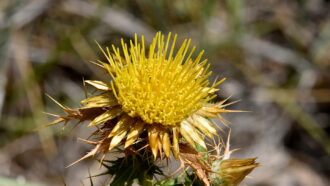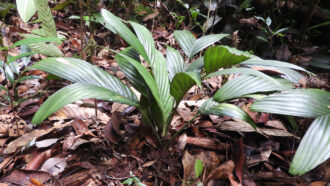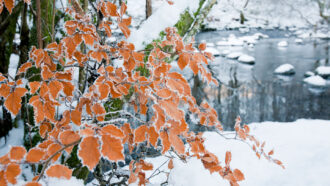Ouch! Lemons and other plants can cause a special sunburn
They contain chemicals that, when activated by the sun, kill skin cells
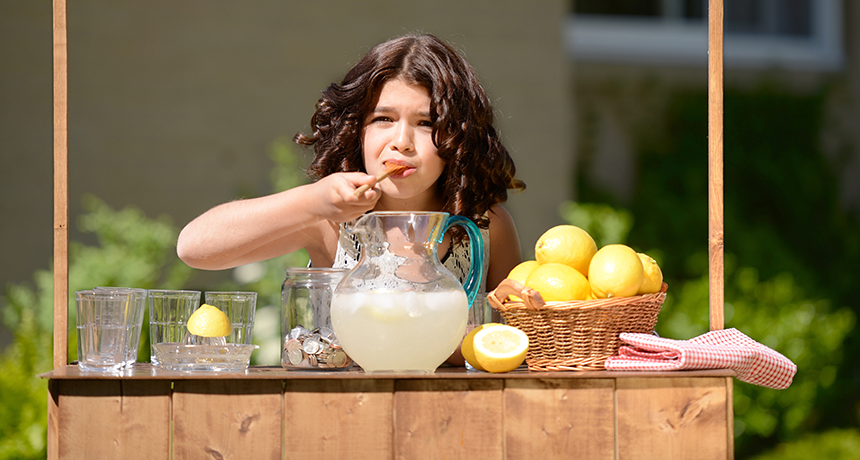
Making lemonade is a rite of summer for many kids. But those lemons can “bite back” if their juice gets on skin and then becomes exposed to sunlight.
mg7/iStockphoto
By Aimee Cunningham and Janet Raloff
Summer is the time for outdoor fun. But to enjoy it safely, people should heed some general warnings. Check for ticks. Head indoors at the first sign of lightning. Slather on sunscreen. And if you put up a lemonade stand, squeeze those lemons indoors. Then wash your hands well — at least if you’ll be out in the sun. The reason: Lemons make chemicals that harm the skin.
In the presence of sunlight, these chemicals can lead to painful burns or rashes. Each year, many people — children and adults alike — learn this the hard way. Their burns sometimes will be severe enough to blister. Ouch!
Robin Gehris is a skin specialist in Pennsylvania at Children’s Hospital of Pittsburgh. In summer, she sees these burns in her young patients “at least once a week.” Most cases have been triggered by limes and lemons, she says.
One reasonable explanation: lemonade stands.
The ancient Egyptians first described this special type of sunburn more than 3,000 years ago in the Ebers Papyrus. It’s one of the oldest and most important medical documents (written, yes, on papyrus). Four California doctors wrote about it in a 2016 review paper on this special class of sunburns.
These burns also have a special name: phytophotodermatitis (FY-toh-der-muh-TY-tis). It simply means some plant-based thing has made the skin super-sensitive to sunlight. The topic hits the news every so often. And it just did again in the United States as biologists reported in mid-June that they had discovered giant hogweeds for the first time in Virginia. Former homeowners had planted them in their yard because they liked the plants’ exotic look.
Bad idea.
The plants look like Queen Anne’s lace on steroids. The “giant” part of their name makes sense. This relative of the carrot can grow to heights of 4.3 meters (14 feet). And this plant makes the same class of toxic compounds as lemons. That’s why biologists tend to approach hogweeds wearing hazmat suits to avoid the chemicals that can cause burns (or, potentially, blindness — although that has not been reported thus far).
Story continues below image.
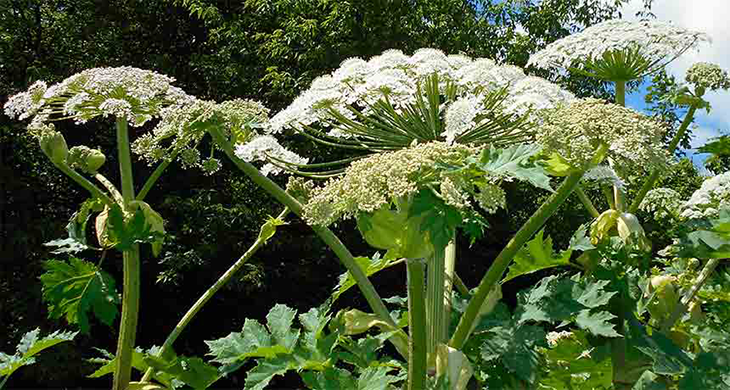
The chemistry of the plants’ defense
The toxic plant chemicals are psoralens (SOR-uh-lenz). Chemists also refer to them as furocoumarins (FOO-roh-KOO-mah-rinz).
It takes skin between 30 minutes and two hours to absorb these chemicals. Later exposure to the sun’s ultraviolet radiation will activate those chemicals, provoking a double whammy. First, those chemicals can bind to — and then damage — DNA. Affected skin cells will die, leaving behind a burn. Secondly, the psoralens can react with any oxygen present to produce a type of molecular fragment known as free radicals. These, too, kill cells.
The kitchen fridge contains plenty of plant-based foods rich in psoralens. Among them: lemons, limes, parsnips, fennel, celery, parsley, dill and members of the mulberry family.
Eating these foods causes no problems. The toxicity occurs only if juice, sap or the leaves from certain of these plants touch the skin. A dribble of citrus juice could leave a streaky red mark. A hand that had been wet with lime juice could leave its likeness where it might have rested on an arm or a leg.
Indeed, some skin doctors have taken to calling phytophotodermatitis “the other lime disease” (a pun on Lyme disease). It’s been seen after people had squeezed lime into Mexican beer that they were drinking outdoors, in the sun. But lemons are another major risk. Ryan Raam of the University of Southern California, in Los Angeles, was part of a team that described a man who came into their hospital emergency room with a large blistering rash. It appeared on the back of both hands and on one foot.
The doctors diagnosed the source of those burns when the man explained that he had just come back from a Caribbean island trip where he had been “hand juicing several hundred lemons.”
In fact, Gehris says, “Often, the [burn] pattern is one of the things that keys us in” to ask about possible skin exposure to foods that make psoralens.
How bad the burn is will depend on how much juice or sap got onto the skin and how long the sun exposure was. A lot can lead to blistering.
This skin damage also can be mistaken as a sign of violence, Raam’s team notes. Reddened skin on a child, they note, “can masquerade as abuse. Many times, the rash will appear as handprints that mimic abuse.” In fact, they cited several instances where this mistake had occurred.
While there’s no reason to handle hogweed, psoralen-making foods pose no risks — as long as you wash exposed skin before heading out into the sun.

